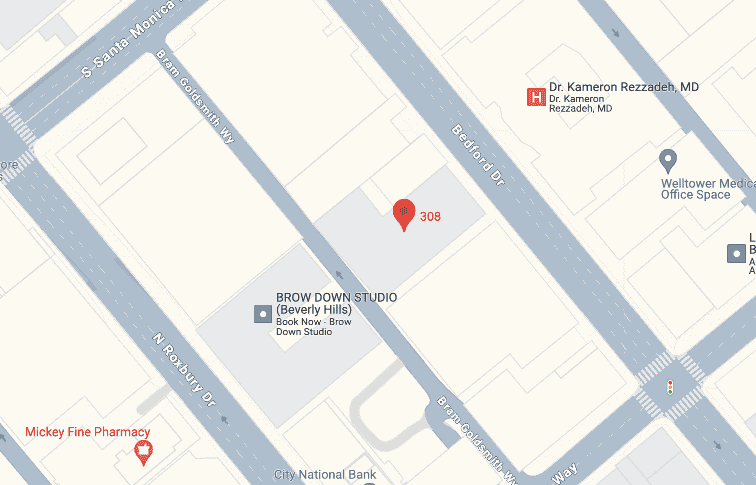Pilonidal cysts can hurt really bad and even complicate your life. If creams aren’t working, surgery is often the best thing to do. If you’ve ever thought about howlong it takes to recover and when you can get back to normal, you’re not alone. Recovery time depends on several factors, including the type of pilonidal cyst excision surgery you had, your overall health, and whether you’re following the doctor’s instructions.
What’s the Deal After the Operation?
There are several methods for removing a pilonidal cyst. How a cyst is removed affects the pilonidal cyst excision surgery recovery process. The quickest and easiest method is to drain the excision of pilonidal cyst surgery. But draining doesn’t cure the problem. It is a stupid method that runs the highest risk of recurrence. Cysts that can be drained are just waiting to recur. They should be cut out instead. The ambivalence over why you should drain when you could cut serves as a reminder that the smart courses of action aren’t always the easiest unless you have a good reason to do them.
Then there are techniques that try to avoid making a cut right over your spine. That’s what they do in fancy hospitals. Why? Because a cut along your spine is harder to heal. Also, some techniques just give you more room to heal.
Every technique has its own healing period, which can vary from individual to individual. Your surgeon will select the optimal procedure for you.
Week One: Time to Chill
The first week is commonly the most challenging. It can be agonizingly painful, awfully swollen, and sometimes even discomforting to the point of having a pulse. It is of utmost importance to keep the area involved, especially when stitches are involved, very clean and very dry. But it wouldn’t be a bad idea, literally and figuratively, to get some assistance and take some extra, well-deserved time to let your body bounce back.
A wound is an opportunity for infection, so now’s not the time to get lazy with hygiene. Pain meds can take the edge off and help you get through the day, but resting is the best medicine.
Week Two: Baby Steps
By week two, things usually start coming together. The areas of swelling and pain are typically on the mend, and you might be moving around a little more. But sitting is still a challenge. If you are using a pillow, it is quite special. It is essential dressing for a special anatomy. If you have an open wound, remember to keep the dressing you were using before the move. If you have a closed wound, this pillow talk and the next few sentences are not about you, and you have a special anatomy too. Only it is not about sitting with a closed wound. It is about the wound being closed and the special anatomy that makes the area tough to sit on.
Thus, we give you some overall directions for being clean. Open or closed, your wound is susceptible to infection if it is not kept clean and dry. You might return to work or school if you feel up to it; just remember to be nice to yourself and don’t take on too much right away. Oh, and whatever you do, just don’t pull or strain any part of your body that has healed or is in the process of healing.
It is extremely important to keep everything clean at this time. Keeping everything in our immediate vicinity dry and clean will help us avoid any sort of infectious complications. As some people do, we can also attempt to return to our work and school environments while seated, to the degree that this is comfortable.
Some people return to work or school if they can do so comfortably while seated, but you should ease back in. Don’t strain yourself.
Weeks Three to Four: Slow and Steady
By the third week, the majority of individuals are feeling much better. For wounds that are still open, the tissue will start to close and shrink. Dressings should now be changed with less intensity than before, and for the most part, tissues should not be agitated. For individuals with closed wounds: You are back to light, normal activities. No overdoing it! Follow-up appointments are still very important. If you feel any kind of burning, see your appointment holder right away. If the area looks good, just keep doing what you’ve been doing: staying relatively inactive in the cleanest way possible. And remember, you no longer have any excuse for looking bad. It’s all about light, keeping the area fresh, and smooth transitions back to what you all did pre-surgery.
Weeks Five Through Eight: Getting Stronger
By the fifth week, you should be almost back to your old self. The incision keeps closing or settling, and the tissue is now much firmer and more stable. Scar tissue has formed, we’re sure, and only minimal swelling is left. You can walk, drive, and do just about anything you want (without overdoing it, of course) other than heavy lifting and strenuous exercise. If your flap surgery went well, as it likely did, you’re on the road to a pretty smooth recovery; unlike with the other surgeries, the problem is now fixed, and it shouldn’t give you any more grief as long as you’re doing what you’re supposed to do. After two months, most people feel like they’ve recovered completely. If anything, people sometimes say recovery goes so well and so unnoticed that they forget it happened in the first place.
What Can Mess Up Recovery Time?
Your body’s way of healing can be all over the place because it is about you, your habits, and how well you take to the doctor’s orders.
The younger, healthier, non-smoking half of the population usually escapes with a thinner scar and returns to normal quicker. On the other side of the coin are people with health problems like diabetes or being overweight. They tend to take longer to patch up because how big the cyst was and whether there was an inflection during the time of operation also plays a part.
After the doctor’s orders, taking it easy on the movements, and making a big deal about hygiene can really affect how well the operation site does in the long haul. Missing dressing changes, sitting too soon, or ignoring signs of inflection can lead to unplanned pit stops during you’re trying to get back on the route to normal.
When to Give Your Surgeon a Call During Healing
It is usual to feel mild postoperative discomfort after excision surgery pilonidal cyst. But the following warning signs should not be ignored:
- Increasing pain
- Nasty discharge
- Fever
- Wound splitting open
It’s possible that an infection or some other really serious issue is developing if you see any one of these things. So you should definitely report these to your doc and let them know what’s happening. They may want you to come in and get checked.
Conclusion
How long it takes to bounce back from pilonidal cyst surgery depends on several factors: the sort of surgery you had, how large the wound is, and your general state of health. Most people start feeling better within a couple of weeks and achieve something like 95% healing within 6 to 12 weeks. Some people take a little longer; others, not much. Under the most favorable conditions, that is, if everything goes well and you follow your doctor’s orders to a T, that cyst is out for good. You’ve conquered it.








